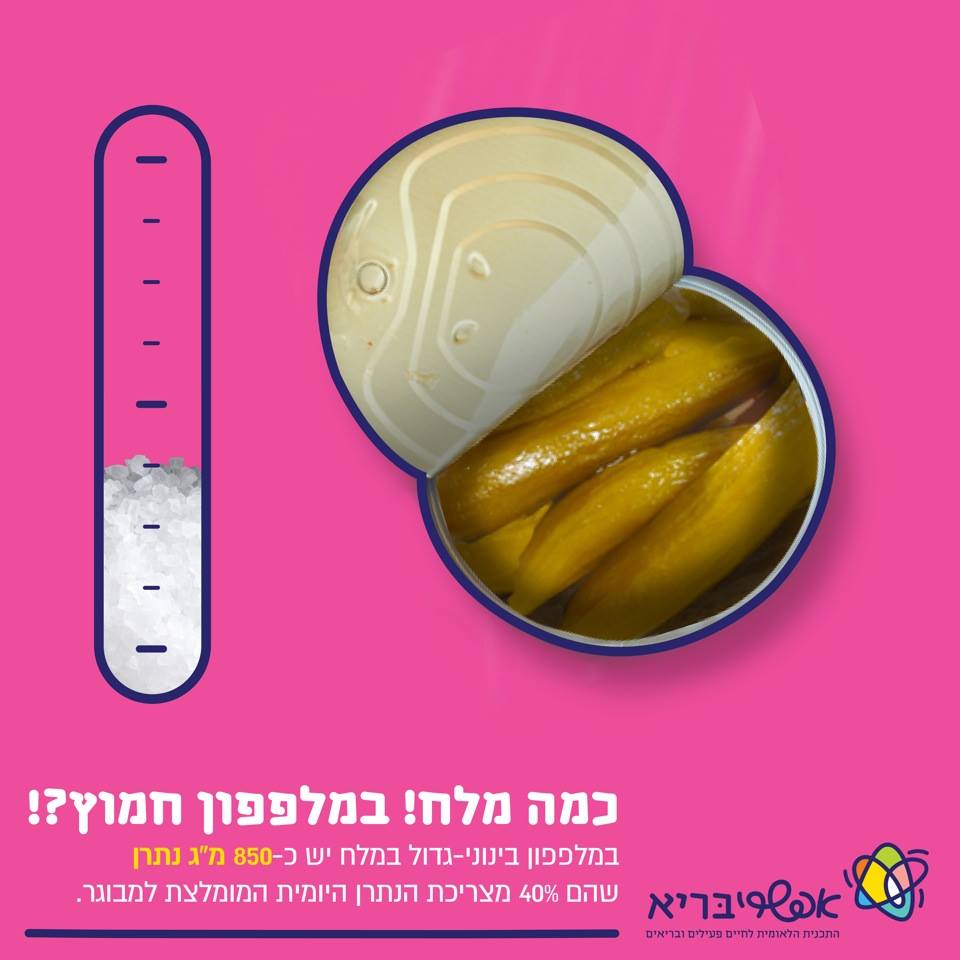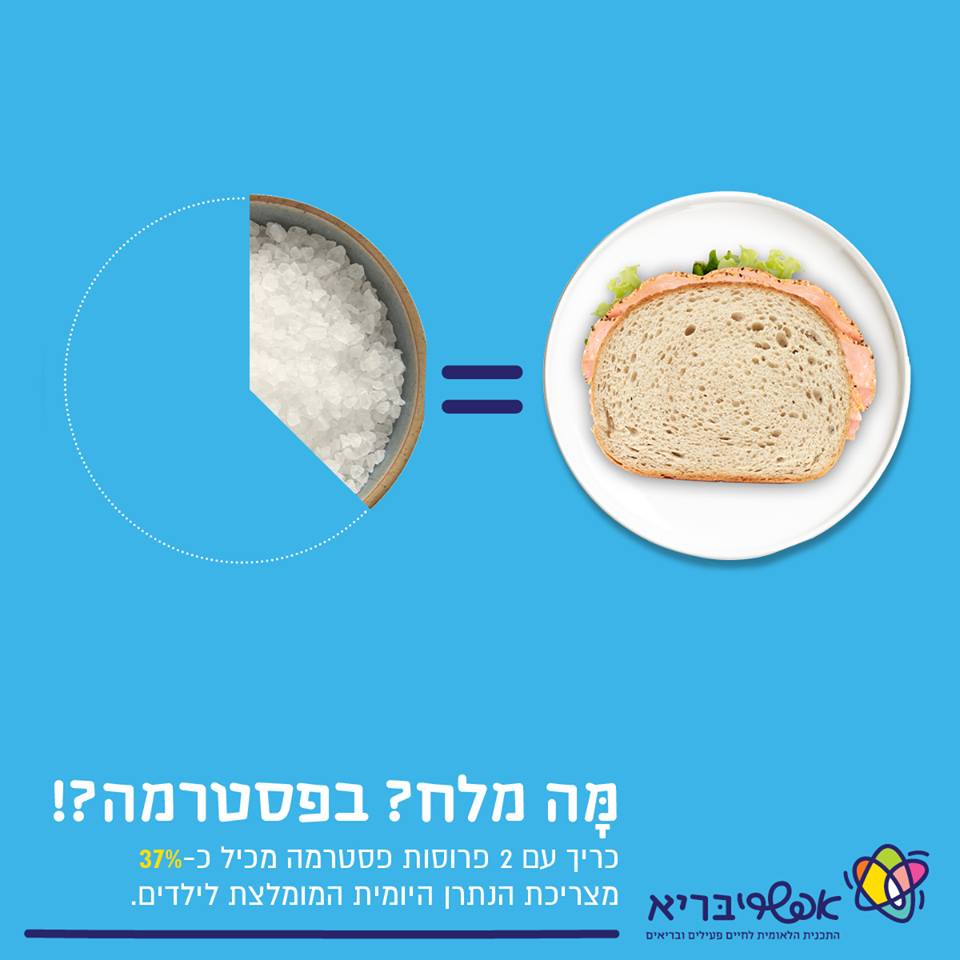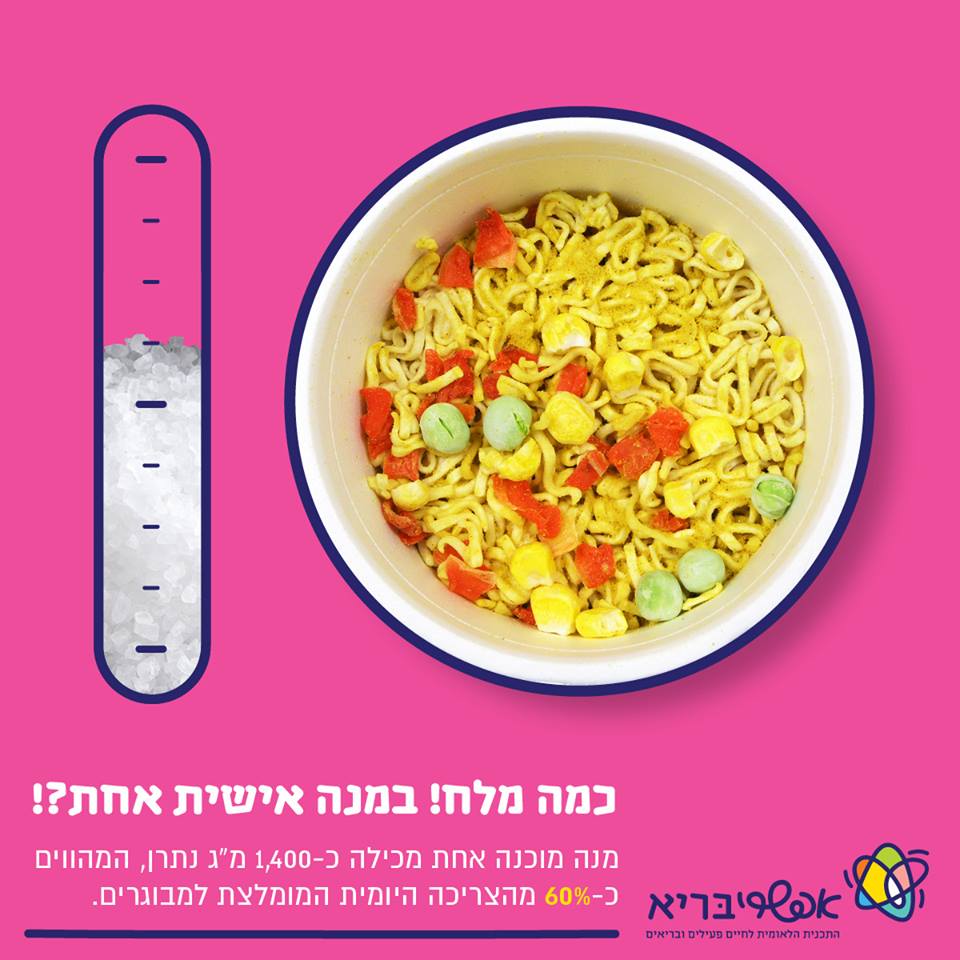
Salt?! In ketchup?!
One serving of ketchup contains a third of the daily sodium intake recommended for children.
Our children’s health is very important to us as parents. We make sure they eat fruit and vegetables and teach our children that these support their growth. We limit quantities of snacks and candy so they do not become obese or develop tooth decay – it is clear that teaching them a heathy diet from a young age will help them become adults with a healthier lifestyle.
Can I add salt?
How many times have we heard that question? The reason we are drawn to the flavor of salt is because it is made up of two minerals the body cannot produce naturally – sodium and chloride. While these minerals are essential for the development and maintenance of systems in the body, excessive consumption of sodium increases the risk of hypertension, cardiovascular disease, stroke, kidney failure and more. It is important that we address excessive intake of salt and avoid it from an early age. In most cases, it is easier to accustom children to the taste of unsalted raw food and the assumption is that if we raise our children from a young age on a less salty diet, they will grow into adults with healthier habits – consuming less sodium.
Recommendations vs. facts
The following table shows the Ministry of Health’s recommended daily sodium intake among children:
| Age | Grams of salt | Equivalent in teaspoons | Quantity of sodium, milligrams |
|---|---|---|---|
| Adults | 5-6 | 1 teaspoon | Approx. 2,000-2,400 |
| 9-13 | 5.5 | 1 teaspoon | Approx. 2,200 |
| 4-8 | No more than 4.8 | Less than 1 teaspoon | Approx. 1,900 |
| 1-3 | No more than 3.8 | A little over ½ teaspoon | Approx. 1,500 |
| Under 12 months | It is recommended not to add salt at all. |
How much salt do children actually consume a day? Twice the recommended amount! Approximately 12 grams of salt which are equivalent to more than 2 teaspoons of salt.
Where is the salt hiding?
You may be surprised but the quantities of sodium we consume from table salt is only about 13% - it is preferable to habituate children to consume food with no added salt but most sodium doesn’t come from this source. Raw and natural foods like fruit and vegetables, legumes, grains and even water contain small amounts of sodium naturally – about 12% of our recommended daily intake.
75% of our daily sodium intake comes from processed foods such as ready-made schnitzels, sauces, breads, milk and even sweet foods. The reason is that beyond flavor, salt has other functions in food processing such as masking aftertastes, control of bacteria and food preservation.
Look how much sodium is hiding in our children’s favorite foods:
- Ketchup – in an average serving of 50 grams (3-4 tablespoons) of this popular food there are 650-1,000 mg of sodium. Such a serving of ketchup contains between 25-42% of the recommended daily sodium intake for children aged 4-8.
- Pickled cucumbers – In one medium to large pickled cucumber in brine there is around 950 mg sodium, almost 50% of the recommended daily sodium intake for children aged 4-8.
- In one medium to large pickled cucumber in vinegar there is around 850 mg sodium, almost 45% of the recommended daily sodium intake for children aged 4-8.
We should all be aware that one medium to large cucumber in vinegar or salt contains 40% of the recommended daily sodium intake for adults.

So much salt! In a pickled cucumber?!
In a medium to large pickled cucumber in brine there is approximately 850 mg sodium which makes 40% of the recommended daily sodium intake for adults.
A sandwich made of two slices of white bread with two normal-size slices of pastrami contains 750 mg of sodium. This quantity is more than 37% of the recommended daily intake for children.

Salt?! In Pastrami?!
A sandwich with two slices of pastrami contains about 37% of the recommended daily intake for children.
Instant meals (which are sometimes a quick and easy solution), such as a Chinese-flavored noodle dish contains about 70% (!) of the daily sodium intake recommended for children aged 4-8.
So much salt! In one instant meal?!
One instant meal contains about 1,400 mg sodium which is about 60% of the recommended daily sodium intake for adults.
How to reduce sodium intake? Gradually and with home-cooked meals
Salt is an acquired taste – everyone has a different sense of taste. A sudden sharp reduction will make our food taste bland and tasteless, and result in children refusing to eat the food they are served. Some ways to help reduce sodium intake:
- Gradual reduction of salt and home cooked meals that we know what we put into. To enhance the flavors of home-cooked meals, use raw spices and herbs instead of salt and soup powders.
- Consume more raw and natural foods and reduce the consumption of processed foods.
- If you purchase processed foods, compare food labels of different products and purchase the products containing less sodium.
Change at a national level
EfshariBari works in many ways and has many operations to reduce the average daily salt intake by 3 grams until 2020. As part of the program, meetings with representatives of the food industry have been conducted to determine sodium reduction targets in staple food products in the diets of many Israelis.
It is important to remember that the industry has the knowledge to manufacture food products with less sodium. As awareness of change increases and demand for change by consumers increases, it will inevitably lead to lower sodium intake from food.
The process is gradual and the getting used to less salt takes time, but we certainly believe that change is not only necessary – but also healthy is possible (EfshariBari).




